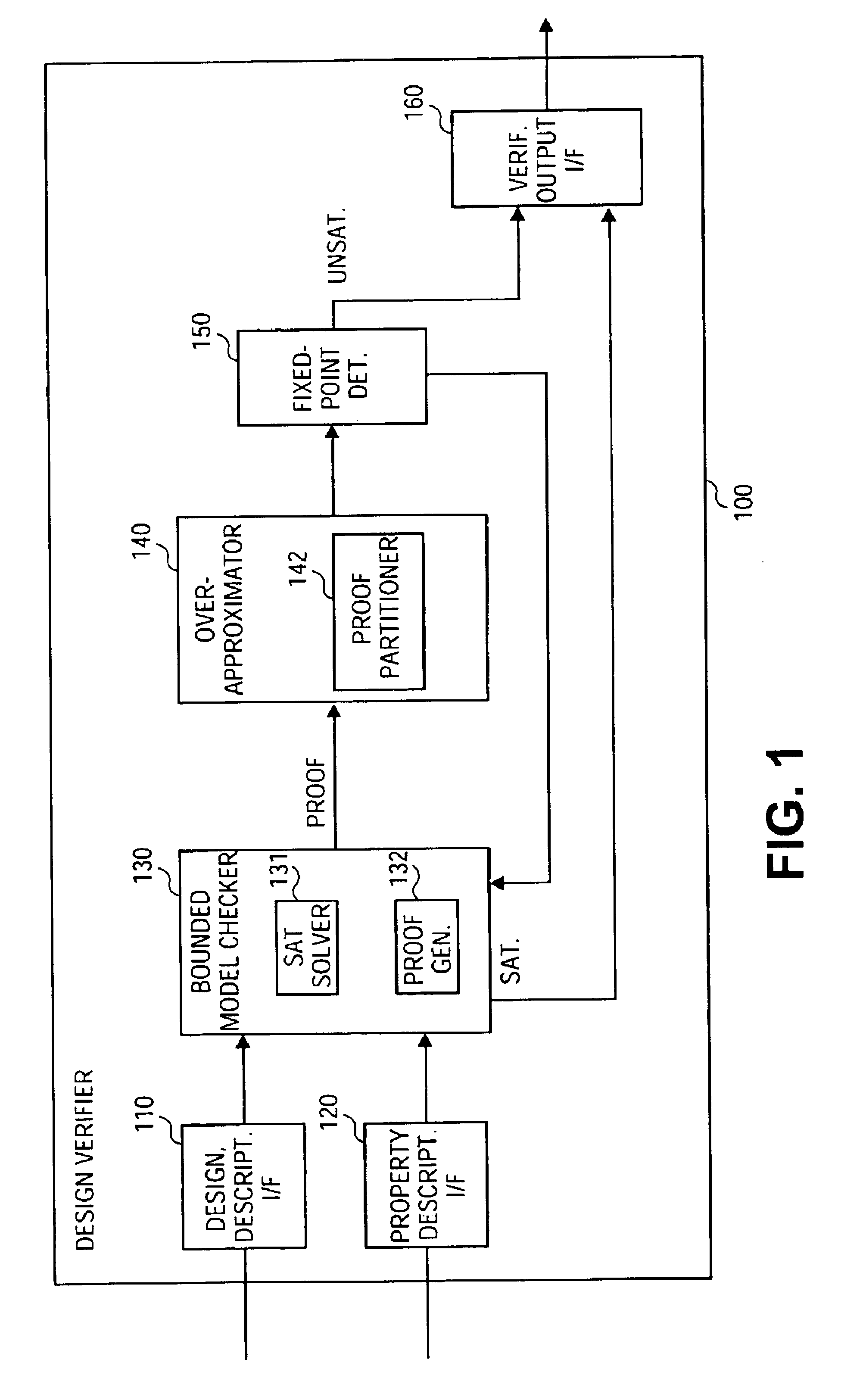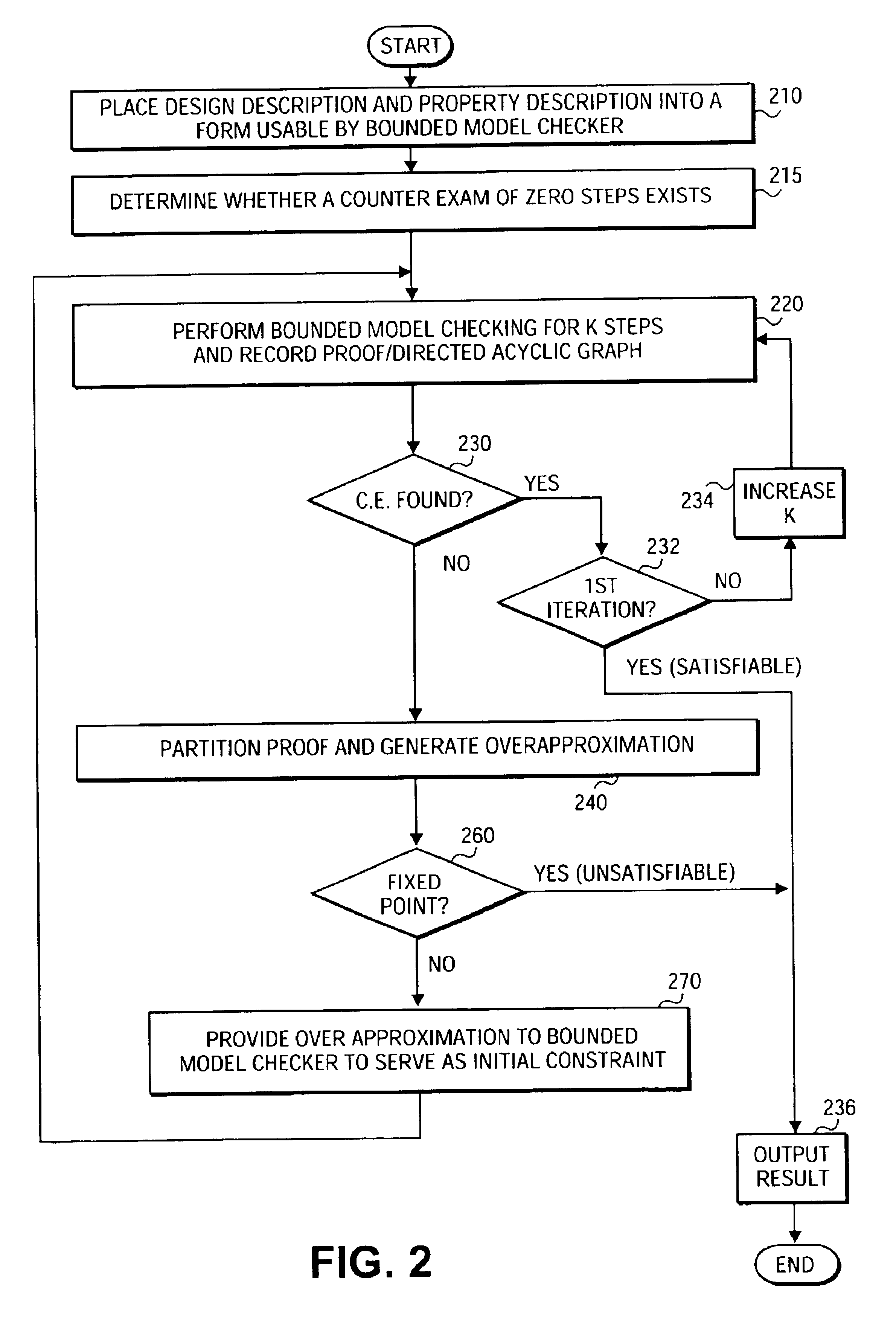Method and system for design verification using proof-partitioning
a design verification and proof-partitioning technology, applied in the field of design verification, can solve the problems of partial verification in many applications, system entering the preselected, and only practical for relatively small systems
- Summary
- Abstract
- Description
- Claims
- Application Information
AI Technical Summary
Problems solved by technology
Method used
Image
Examples
Embodiment Construction
[0014]In the following detailed description, numerous specific details are set forth. However, it is understood that embodiments of the invention may be practiced without these specific details. In other instances, well-known circuits, structures, and techniques have not been shown in detail in order to not obscure the understanding of this description. These embodiments are described in sufficient detail to enable those of ordinary skill in the art to practice the invention. The following detailed description is, therefore, not to be taken in a limiting sense, and the scope of the invention is defined only by the appended claims.
[0015]FIG. 1 illustrates a design verifier 100 according to one embodiment of the present invention. In this embodiment, design verifier 100 is implemented using machine-readable instructions that cause a machine (e.g., a computer or work station) to perform operations that allow the machine to receive a design description of a system (e.g., a design descri...
PUM
 Login to View More
Login to View More Abstract
Description
Claims
Application Information
 Login to View More
Login to View More - R&D
- Intellectual Property
- Life Sciences
- Materials
- Tech Scout
- Unparalleled Data Quality
- Higher Quality Content
- 60% Fewer Hallucinations
Browse by: Latest US Patents, China's latest patents, Technical Efficacy Thesaurus, Application Domain, Technology Topic, Popular Technical Reports.
© 2025 PatSnap. All rights reserved.Legal|Privacy policy|Modern Slavery Act Transparency Statement|Sitemap|About US| Contact US: help@patsnap.com



